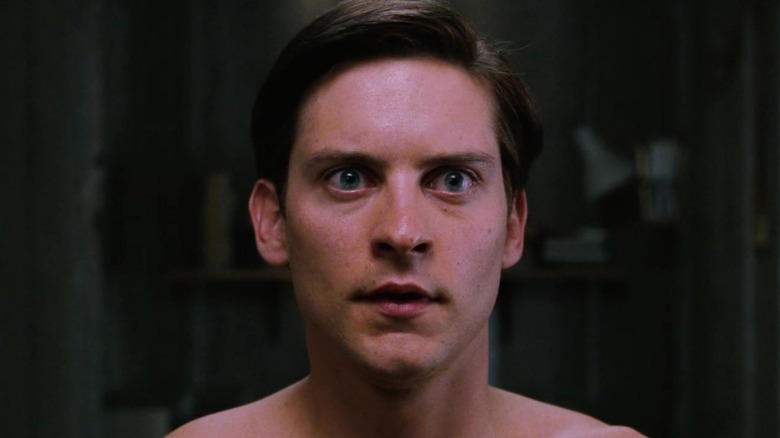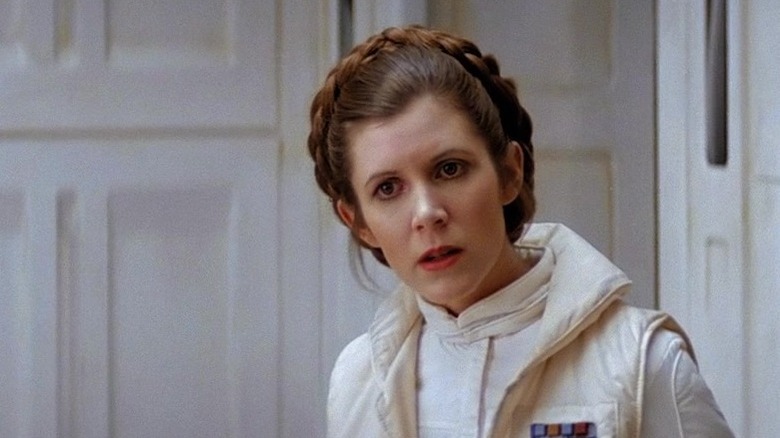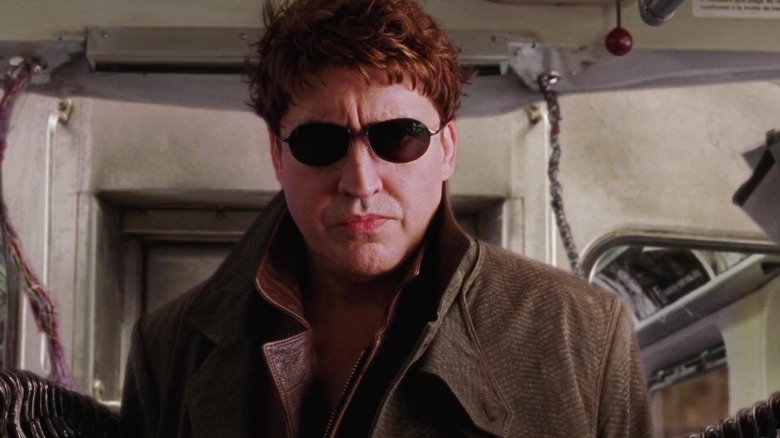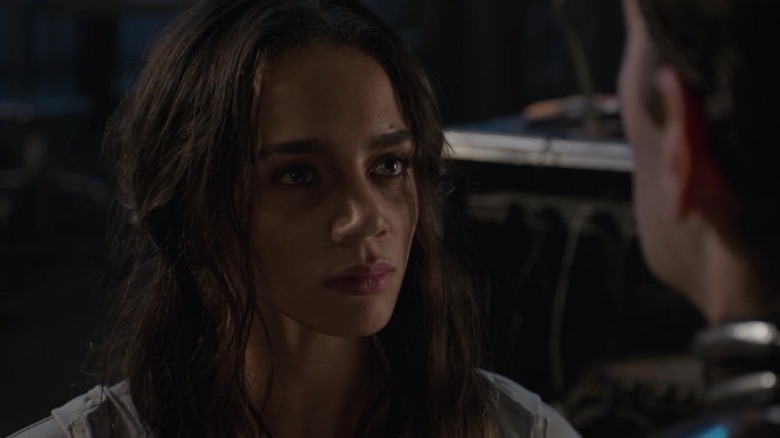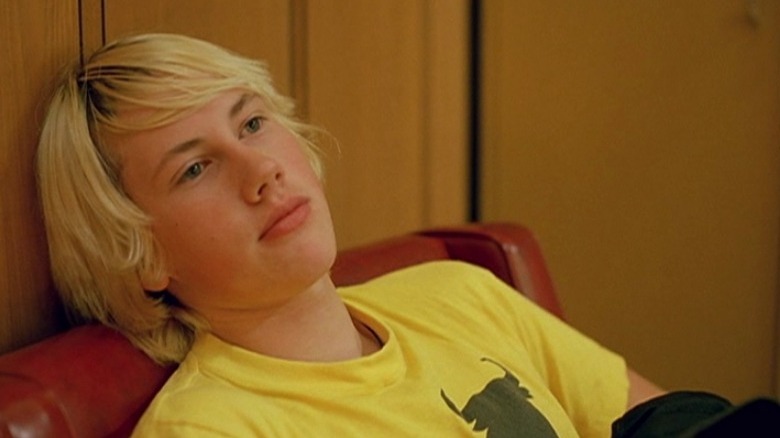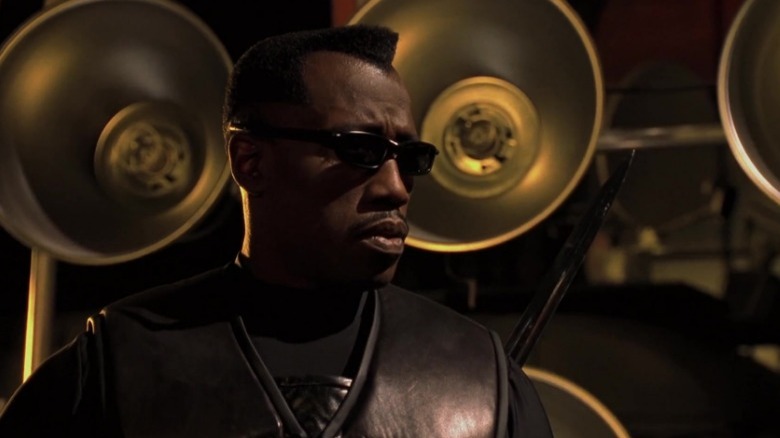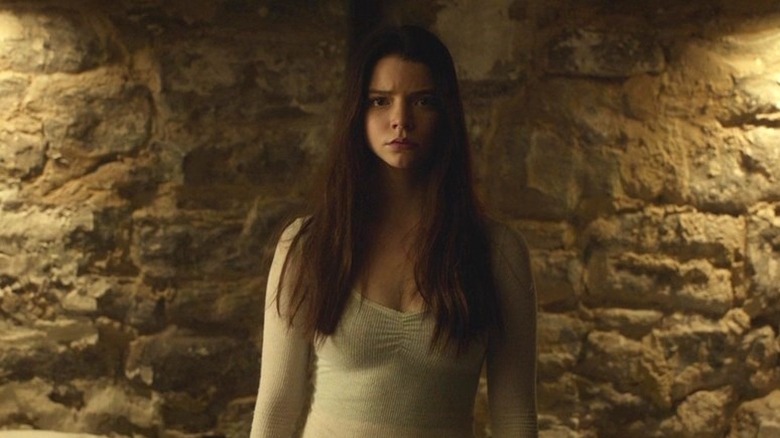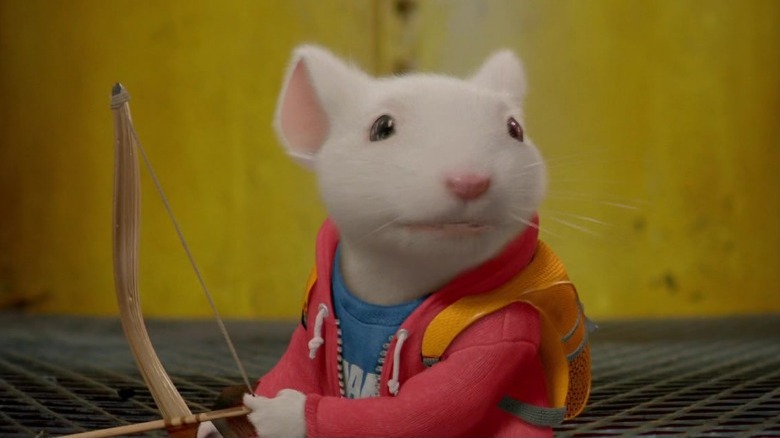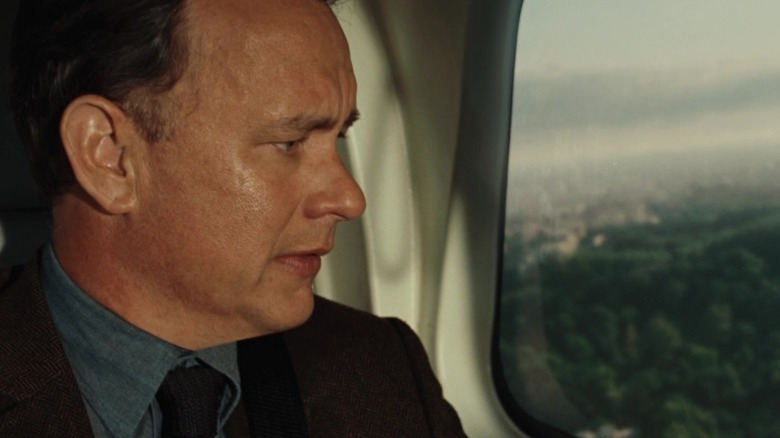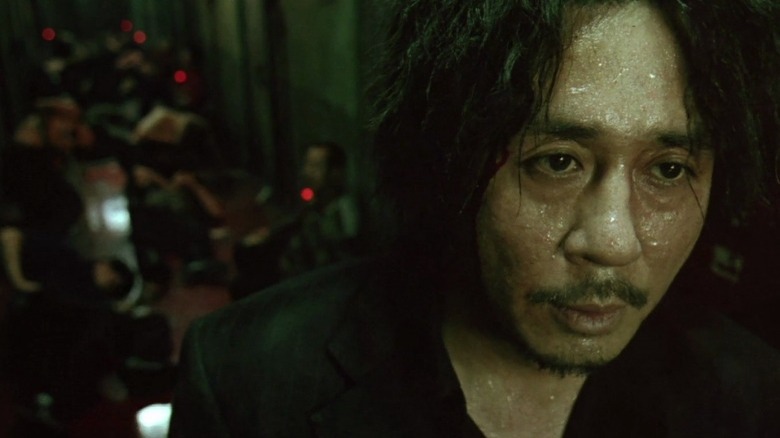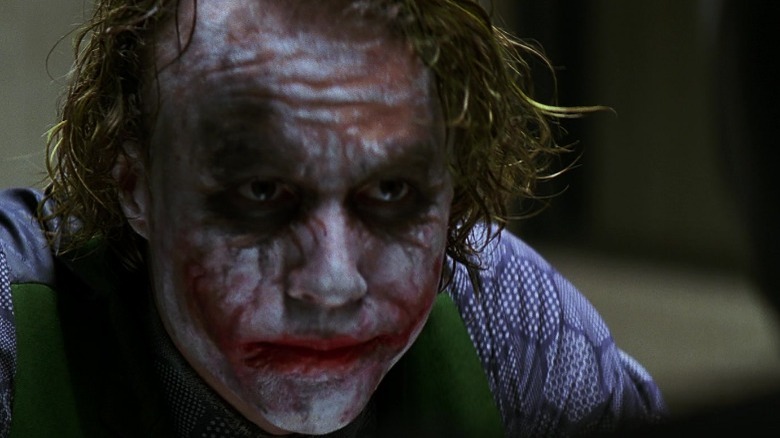Trilogies Where The Second Film Is Actually The Best
Everybody knows that the first movie in a trilogy is always the best, right? After all, the first film is often the original story that fans fell in love with, and any attempts to make lightning strike twice will often sputter out. Just look at "Iron Man" and "Back to the Future" — the sequels are nice, but they don't hold a candle to these films.
Or, if the first movie in a trilogy isn't the best one, then it will often end with the best installment. In many cases, the third movie is the cherry on top, where the stakes are highest and the trilogy reaches the conclusion it was likely building toward all along. Just think of "The Lord of the Rings" or the "Wolverine" trilogies, both of which stuck the landing with their third and final films.
Rarest of all is the trilogy where the film sandwiched in the middle far surpasses the other two. It can be difficult to make a sequel that is better than not just the original but also any other films that follow, yet these movies managed to pull it off. Below we have compiled all the trilogies where the second film is undoubtedly the best one.
The Empire Strikes Back from the original Star Wars trilogy
"Star Wars: Episode V — The Empire Strikes Back" raises the stakes of the original "Star Wars" trilogy. The first film is a cozy adventure movie where viewers mostly get the sense that everything will turn out alright in the end, but there are no such assurances here. Right from the start, we see the characters in peril, with the Resistance barely fending off the attacking Empire and Luke (Mark Hamill) being dragged away by a wampa.
Most of "Star Wars: Episode IV — A New Hope" takes place on Tatooine and inside the Death Star, but "The Empire Strikes Back" expands the world to include the caves of Hoth and the majestic Cloud City. As well, the sequel offers more flirty banter between Han Solo (Harrison Ford) and Leia (Carrie Fisher). It's the first film to hint at Darth Vader's soft spot for Luke, though he doesn't yet save Luke as he does in the third film, which makes him the perfect balance between menacing and sympathetic.
Plus, it gets bonus points for introducing Yoda (Frank Oz) — and for not showing Leia in a gold bikini, which we're sure some "Star Wars" fans wish they could unsee. Of course, we'd be remiss not to mention a certain plot twist that makes Luke's relationship with his father a bit more complicated. When "The Empire Strikes Back" first came out, this moment set a new bar for cliffhanger endings and ensured audiences would be dying to see the next installment.
Spider-Man 2 from Sam Raimi's Spider-Man trilogy
Sam Raimi's "Spider-Man" revitalized the superhero genre. Even if its CGI hasn't aged well, it's impossible not to love Tobey Maguire's relatable hero, and Willem Dafoe gives an outstanding performance as the tormented Green Goblin. However, it turns out Raimi was just warming up. Things get even more interesting in "Spider-Man 2," after Peter's best friend Harry Osbourne (James Franco) becomes the sworn enemy of Spider-Man.
That's not the only way that this sequel ups the ante. Here Peter starts to lose his web-slinging abilities and needs to make do without them. More than any other film in the trilogy, Peter must deal with mundane, real-world problems in this movie (which is part of the appeal of Spider-Man as a character). Peter must worry about maintaining his GPA, holding a job, and paying rent.
While the Green Goblin is excellent, the villain Dr. Otto Octavius (Alfred Molina) aka Doctor Octopus is even better. Like the Green Goblin, Octavius is a good man corrupted by his monstrous creation, but unlike Norman Osbourne, Octavius gets a moment of redemption. Plus, the intense hospital scene is a testament to just how much gravitas this villain carries. It's no wonder that "Spider-Man 2" is considered one of the best superhero movies of all time. The film was a soaring high point in Raimi's trilogy, before "Spider-Man 3" came along and tried to cram in way too many characters and subplots.
Ant-Man and the Wasp from the Ant-Man trilogy
The first movie in the "Ant-Man" trilogy is likable enough, but it doesn't really stand out in any way. Many viewers were frustrated that the original director, Edgar Wright, left the project because they were hoping he would do something wild and idiosyncratic like "Scott Pilgrim vs. the World." Meanwhile, not even Kang (Jonathan Majors) can save "Ant-Man and the Wasp: Quantumania."
"Ant-Man and the Wasp" exhibits the best of the "Ant-Man" trilogy. For one, it offers a more interesting villain than the first one; instead of a greedy industrialist seen all too often in Marvel movies, we get Ghost (Hannah John-Kamen), a graceful fighter who is clashing with Hank Pym (Michael Douglas) because she's searching for a cure for her terminal illness (okay, there's also a greedy industrialist as a secondary villain, but he's supposed to be more of an annoyance than an actual threat).
As well, the film gives fans the most inventive use of Pym particles in the entire trilogy. The second movie introduces the genius idea of a portable lab (complete with a handle and wheels) and shows off Hank Pym's Hot Wheels collection. Best of all, "Ant-Man and the Wasp" is the funniest of the three. Fans get to watch a pint-sized Scott (Paul Rudd) scurry around in a too-big sweater and see the motor-mouthed Luis (Michael Peña) take truth serum (a huge mistake, his captors soon realize).
Elephant from Gus Van Sant's Death Trilogy
Gus Van Sant's "Death Trilogy" is not a trilogy in a traditional sense. There's no narrative linking the three films, nor do they have any characters in common. "Elephant" is less like a sequel to "Gerry" and more like a companion, another film reflecting on the same theme (death, obviously.) These two films (along with the third movie, "Last Days") merely share similar moods and the same cinematographer, and each one was loosely inspired by a true story.
Still, Van Sant has shared that he definitely intended for them to be a trilogy, and "Elephant" is undeniably the best one. "Gerry" is beautifully-shot, but the slow pacing and anticlimactic ending aren't for everyone. Meanwhile, critics such as Mark Kermode have accused "Last Days" of romanticizing suicide, calling the film "navel-gazing garbage."
On the other hand, though "Elephant" may be deeply unsettling, it's impossible to look away from this movie. The first half of the film depicts the day-to-day lives of high school students, and while it's not always the most interesting to watch, it's still strangely hypnotic, especially because you know what's coming. The second half follows a school shooting in intense and unflinching detail. Sure, it may not be easy to watch a school shooting unfold. But the way Van Sant films it, it's fascinating, and it's much easier to watch than a rock star killing himself or two guys starving in the desert.
If you or anyone you know is having suicidal thoughts, please call the National Suicide Prevention Lifeline by dialing 988 or by calling 1-800-273-TALK (8255).
Blade II from the Blade trilogy
Although "Blade" and "Blade II" have roughly the same score on Rotten Tomatoes, most fans would agree "Blade II" is just a little bit better. The sequel is the source of several iconic one-liners, like when Reinhardt (Ron Perlman) asks our half-vampire hero, "Can you blush?" The line becomes even cooler after Blade (Wesley Snipes) hurls the line right back at him later in the movie. Reinhardt and the rest of Blood Pack make the sequel more interesting because audiences can never be sure if they'll stab Blade in the back.
Most importantly, though, there's one thing that "Blade II" has that "Blade" doesn't: the signature stamp of Guillermo del Toro, who directed the second film. Fans will recognize the film's del Toro-ness in the gorgeous production design as well as the gruesomely creative monsters (the hungry maws of the Reapers, whose jaws unfold in a way that shouldn't be possible is enough to give grown men nightmares).
Also courtesy of del Toro is a complex villain. Jared Nomak (Luke Gross) is the fruit of a lab experiment and was cast aside by his "father," so viewers can't help but feel a little sorry for the guy when Blade finally kills him. This is also classic del Toro, who loves broken and misunderstood monsters. What about the third film, "Blade: Trinity"? Fans and critics agree: that beast is best left dead and buried.
Split from the Unbreakable trilogy
M. Night Shyamalan originally envisioned what would become the "Eastrail 177" trilogy – aka the "Unbreakable" trilogy – back in 2000. According to New Musical Express, the director had wanted the stories of David (Bruce Willis), Kevin (James McAvoy), and Elijah (Samuel L. Jackson) to all be told in a single movie, but he soon realized that he couldn't do them justice in one film. "So I broke it up and decided to make David's origin story first," explained Shyamalan. Years after making "Unbreakable," he followed it up with "Split" and "Glass," though the ending of the third film was something he had in mind all along.
All three films are a different take on the superhero genre, focusing more on suspense than spectacle. Still, some viewers felt like the ending of "Unbreakable" was simply Shyamalan trying to emulate the twist ending of "The Sixth Sense," with less success. Likewise, "Glass" also seemed contrived to fans, especially the way it bends over backward to connect everything from the previous movies.
On the other hand, "Split" does a nice job of subtly showing its connection to the first movie (via a small cameo from David) while still telling a unique standalone story. The film takes full advantage of the claustrophobic setting to amp the tension up to an eleven. Although the portrayal of Kevin's "multiples personalities" perpetuates some unhealthy stereotypes about dissociative identity disorder (DID), McAvoy is still admittedly a wonder to behold as he portrays 23 different characters at once.
Stuart Little 2 from the Stuart Little trilogy
The first movie in the "Stuart Little" trilogy is unique, but its tone swings between saccharine sincerity and surprisingly edgy dark comedy. Both of these are well-executed, but it's a little jarring to see them both in the same film. As for the straight-to-DVD sequel, "Stuart Little 3: Call of the Wild," well, the less said about this movie, the better. You would think that if the franchise made the effort to switch from live-action to animation, the movie would at least have decent-quality animation, but sadly this is not the case. It's a completely unnecessary continuation of Stuart's story.
"Stuart Little 2" is definitely the best of the bunch, in part thanks to the charismatic villain, Falcon (James Woods). Things really get interesting when Stuart (Michael J. Fox) falls in love with a bird named Margalo (Melanie Griffith), who is also secretly in cahoots with the villain. In the sequel, multiple side characters get their own arcs, too. Stuart's doting mom (Geena Davis) must learn to trust her son to take care of himself, while George (Jonathan Lipickni) constructs a wobbly tower of lies.
The film culminates with a climax that's much more cinematic than the first one, trading a tense catfight for an exhilarating aerial dogfight. The only downside to "Stuart Little 2" is that Snowbell (Nathan Lane) has been declawed, so to speak, since he has been reduced from Stuart's caustic and witty nemesis to a comic relief character. Even still, Lane manages to make the character endearing.
Angels & Demons from the Robert Langdon trilogy
For what it's worth, "Angels & Demons" is the best Robert Langdon movie. Sure, its Rotten Tomatoes score doesn't even surpass 40%, but at least it's marginally better than "The Da Vinci Code" and "Inferno." In the books that the franchise was based on, "Angels & Demons" was actually the first installment, but the filmmakers rearranged the order for the movie adaptations, so the first book is actually the second movie and the least offensive of the trilogy.
Critics lamented that the first movie was more exposition than actual story, so the second film includes more action scenes than the first one and tries to keep the plot moving at a faster clip (even if there's still way too much exposition, and the plot still makes zero sense). "Angels & Demons" is still just as dumb as the first movie, but at least it's not nearly as self-serious. As well, the sequel makes excellent use of the majestic backdrop of Rome.
Sure there's an evil plot that involves an antimatter bomb, which demands some suspension of disbelief. But at least viewers aren't expected to buy that a dying Jacques Saunière (Jean-Pierre Marielle) managed to leave an elaborate message in his own blood, or that Langdon (Tom Hanks) suddenly got amnesia. Hey, we didn't say it was a good film, just that it was the best (read: least terrible) of the three.
Oldboy from the Vengeance Trilogy
Fans of the Korean revenge thriller, "Oldboy," may not even be aware that it was part of a trilogy. It belongs to a loosely-connected trilogy of three standalone movies all tied together by the theme of the hero getting revenge — at a great cost. Each film in the "Vengeance Trilogy" is a fresh and thought-provoking take on the traditional revenge movie, though not all of them are created equal.
"Sympathy for Mr. Vengeance" is a little slow to get started, and it can be depressing to watch the hero's sister (Im Ji-eun) slowly die of kidney failure (and then kill herself). Meanwhile, some viewers were put off by the heroine's coldness in "Lady Vengeance," especially after she kills a dog just to see if her weapon works. So the crown goes to "Oldboy" as the best of the three.
"Oldboy" has faster pacing and a stronger forward momentum compared to the other two, not to mention some awesome fight sequences. In fact, the film is famous for its iconic fight scene where Oh Dae-su (Choi Min-sik) fights off dozens of attackers with only a hammer — which is especially impressive because it's all done in a single continuous shot. Best of all is the movie's amazing twist ending, in which Dae-Su discovers he's not the only one with an elaborate plan for revenge. When it comes to showing viewers that vengeance cannot make you whole again (while still giving the audience a bloody good time), no movie does it better than "Oldboy."
If you or anyone you know is having suicidal thoughts, please call the National Suicide Prevention Lifeline by dialing 988 or by calling 1-800-273-TALK (8255).
The Dark Knight from The Dark Knight trilogy
Looking back on Christopher Nolan's "Dark Knight" trilogy, there is no doubt that the second film (from which the trilogy derives its name) is actually the best. "Batman Begins" certainly puts a unique spin on the character, but the movie doesn't go quite as far as it could have, because it needs to show the hero's origin story before delving into new territory. And "The Dark Knight Rises," while an ambitious and thrilling conclusion to the trilogy, couldn't escape the shadow of "The Dark Knight."
All the elements that make the trilogy great are present in the second movie: the gritty Gotham, the twisty plot, and the magnetic presence of Michael Caine as Alfred. Yet "The Dark Knight" also boasts the charismatic Harvey Dent (Aaron Eckhart), who undergoes a startling transformation over the course of the film. Throw in one faked death and multiple real deaths, and you get one heck of a sequel.
Of course, the key thing that elevates "The Dark Knight" above the rest is Heath Ledger's scene-stealing performance as the Joker. The character is simultaneously terrifying and fun to watch because he is wildly unpredictable. As the catalyst behind the entire movie, the Joker raises some uncomfortable moral questions and pushes Batman (Christian Bale) to the brink. Since Ledger, unfortunately, passed away before the third film in the trilogy could be filmed, it was kind of inevitable that "The Dark Knight Rises" wouldn't quite live up to the second film.
